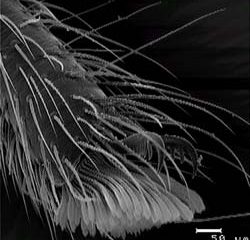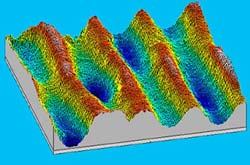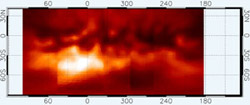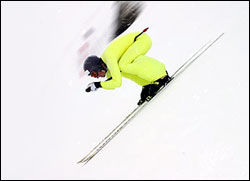Physics and Astronomy
This area deals with the fundamental laws and building blocks of nature and how they interact, the properties and the behavior of matter, and research into space and time and their structures.
innovations-report provides in-depth reports and articles on subjects such as astrophysics, laser technologies, nuclear, quantum, particle and solid-state physics, nanotechnologies, planetary research and findings (Mars, Venus) and developments related to the Hubble Telescope.

Spiders make best ever Post-it notes
Scientists have found that the way spiders stick to ceilings could be the key to making Post-it® notes that don’t fall off – even when they are wet. A team from Germany and Switzerland have made the first detailed examinations of a jumping spider’s ‘foot’ and have discovered that a molecular force sticks the spider to almost anything. The force is so strong that these spiders could carry over 170 times their own body weight while standing on the ceiling. The research is published today (Monday 19 Apr

From top quarks to the blues
Berkeley Lab physicists develop way to digitally restore and preserve
audio recordings
The 1995 discovery of the top quark and singer Marian Anderson’s 1947 rendition of Nobody Knows the Trouble I’ve Seen may seem unrelated. But through an interagency agreement with the Library of Congress, the same technology used to study subatomic particles is helping to restore and preserve the sounds of yesteryear.
“We developed a way to image the grooves in a recording that is simil

Cosmic Magnifying Glass
Distant star reveals planet Like Sherlock Holmes holding a magnifying glass to unveil hidden clues, modern day astronomers used cosmic magnifying effects to reveal a planet orbiting a distant star. This marks the first discovery of a planet around a star beyond Earth’s solar system using gravitational microlensing. A star or planet can act as a cosmic lens to magnify and brighten a more distant star lined up behind it. The gravitational field of the foreground star bends

A "Dragon" on the Surface of Titan
VLT looks through narrow atmospheric window and produces most detailed images yet New images of unsurpassed clarity have been obtained with the ESO Very Large Telescope (VLT) of formations on the surface of Titan, the largest moon in the Saturnian system. They were made by an international research team [1] during recent commissioning observations with the “Simultaneous Differential Imager (SDI)”, a novel optical device, just installed at the NACO Adaptive Optics instrument [2].
With the hi

Space technology hits the slopes
Using technology from Europe’s space programme ski maker Rossignol hopes to beat the world speed skiing record at Les Arcs Pro Mondial in France next week. Using skis stabilised by a mechanism originally developed for ESA’s Rosetta spacecraft, the aim is to reach an astonishing 255 km/h down the slopes.
Skis Rossignol teamed up with ESA’s Technology Transfer Programme to identify innovative technologies which could help beat the records. A world championship title in 2003 showed that they w

Time-reversal acoustics research promises medical breakthroughs
Scientists have not yet found a way to actually make time run backward, but in the cutting-edge world of recent acoustics research, they have shown a way to make sound waves run backward in a kind of ultra-focused reverse echo. By the technology known as time-reversal acoustics, sound waves – in exact reverse order from the original sound – echo directly and very precisely back to their source point.
The technology promises a wide array of applications, including medical applications such a